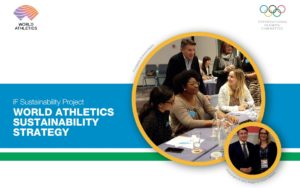
The World Food LCA Database (WFLDB) is a comprehensive international life cycle inventory database and a global initiative led by Quantis in partnership with leaders in the agri-food sector.
WFLDB was launched in 2012 in response to the growing need for reliable, transparent and coherent environmental data and a consistent methodology for assessing the impacts of agri-food products.





ICAO Carbon Emissions Calculator
The International Civil Aviation Organisation (ICAO) is funded and directed by 193 national governments to support their diplomacy and cooperation in air transport as signatory states to the Chicago Convention (1944).
ICAO has developed a methodology to calculate the carbon dioxide emissions from air travel for use in offset programmes.
The ICAO Carbon Emissions Calculator allows passengers to estimate the emissions attributed to their air travel. It is simple to use and requires only a limited amount of information from the user.
Summary of the methodology used:
CO2 Emissions per passenger take into consideration the load factor and are based only on passenger operations (i.e. fuel burn associated with belly freight is not considered). The steps for the estimation of CO2 emissions per passenger:
- Step 1: Estimation of the aircraft fuel burn
- Step 2: Calculation of the passengers' fuel burn based on a passenger/freight factor which is derived from RTK data
- Step 3: Calculation of seats occupied (assumption: all aircraft are entirely configured with economic seats). Seat occupied = Total seats * Load Factor
- Step 4: CO2 emissions per passenger = (Passengers' fuel burn * 3.16) / Seat occupied


One of the major features of IDEA is that it covers all business economic activities in Japan. The number of datasets contained in this database is now 3,825 in total.
IDEA contains LCI datasets of non-manufacturing sectors (agriculture, forestry and fisheries, mining, construction and civil engineering) as well as manufacturing sectors (food and beverage, textile, chemical industry, ceramics and building materials, metal and machinery) and also sectors such as electricity, gas, water and sewerage. It covers all products that are classified within the scope of the Japan Standard Commodity Classification, so the comprehensiveness is guaranteed.





Sphera’s Life Cycle Assessment Database and software (GaBi Software) combines the world’s leading Life Cycle Engineering modeling and reporting software and content databases with intuitive data collection and reporting tools. Sphera enables Life Cycle Engineering professionals to affect business results by helping to save money, reduce risk, communicate product benefits and increase revenue.
Database is upgraded annually and includes over 9,000 profiles of accurate and relevant data.
GaBi databases include the complete ELCD database, US LCI, data from trade associations and Ecoinvent.





The The National Renewable Energy Laboratory (NREL) and its partners created the U.S. Life Cycle Inventory (USLCI) Database to help life cycle assessment practitioners answer questions about environmental impact.
The USLCI database provides individual gate-to-gate, cradle-to-gate, and cradle-to-grave accounting of the energy and material flows into and out of the environment that are associated with producing a material, component, or assembly in the U.S.
The U.S. Life Cycle Inventory (USLCI) Database is a publicly available database that allows users to objectively review and compare analysis results that are based on similar data collection and analysis methods.
Finding consistent and transparent life cycle inventory data for life cycle assessments is difficult. NREL works with life cycle assessment experts to develop a consistent and transparent life cycle inventory data for life cycle assessment, by providing a central source of critically reviewed life cycle inventory data through its USLCI Database Project. NREL's USLCI management team worked closely with government stakeholders, and industry partners to develop the database.
The USLCI Database Project was initiated on May 1, 2001, and gained national prominence at a meeting of interests hosted by the Ford Motor Company. Funding agencies and representatives of industrial, academic, and consulting communities voiced strong support for the project. As a result, an advisory group with 45 representatives from manufacturing, government, and non-government organizations, as well as life cycle assessment experts, worked together to create the U.S. LCI Database Project Development





Ecoinvent is one of the world's most consistent & transparent life cycle inventory database.
Ecoinvent is a not-for-profit association founded by Swiss Federal Institutes of Technology (eg. ETH Zurich, EPF Lausanne) and by Agroscope (Swiss Institute for Sustainability Science).
With more than 1,000 updated datasets,the ecoinvent Database is trusted by more than 3'000 organisations worldwide, ranging from multinational corporations to leading universities.
Ecoinvent Database is recommended by the International Olympic Committee.
The access to Ecoinvent database and a set of reports is free of charge. The acess to the latest report and supporting documents for enhanced analytic functions requires a licence.





IOC to be climate positive in 2024
In response to the growing climate crisis, the Intenational Olympic Committee (IOC) is aligning with the Paris Agreement on climate change by setting a […]




How green are Premier League clubs? Tottenham top sustainability table
Tottenham are the greenest Premier League club, coming top of a table measuring the sustainability of all 20 top-flight sides. Spurs claimed maximum points […]


In April 2020, World Athletics launched its Sustainability Strategy for 2020-2030. The ten-year strategy is set to provide a framework to the organisation, its Member Federations and its event organisers on how to produce tangible, meaningful and measurable results on environmental, social and economic sustainability. The main objective is to protect the local communities within which the millions of athletes, both competitive and recreational, participate in the sport with the vision of becoming “the leading International Sports Federation in delivering best in class sustainable events”.
The World Athletics strategy has been designed in alignment with the UN Sustainable Development Goals (SDGs) and the IOC Sustainability Strategy and identifies three spheres of responsibility: World Athletics as an organisation (including its Member Federations), the events owned by World Athletics, and those which hold a World Athletics’ Permit or are licensed events.
Click here to download the case study














World Athletics makes commitment to a cleaner, greener, more equitable world
World Athletics (WA) is the global governing body for the sport of Athletics. Today World Athletics encompasses track and field, race walking, road running, cross-country, mountain and trail running. Boasting 214 national Member Federations, World Athletics has significant global reach, and is responsible for the worldwide development of the sport of athletics. World Athletics is committed to ensuring that its athletics events, which are held all over the world, and its headquarters, based in Monaco, are fully aligned to the principles of sustainability. This is in recognition of the growing environmental challenges that the world faces today, specifically air pollution, climate change and our overconsumption of resources. Those, coupled with a lack of global equality and diversity, create an environmental and social impact that poses a serious threat to the quality of our lives and communities. Sustainability within athletics is defined as driving the practices and behaviours of all individuals and organisations developing the sport in such a way that it:
- accounts for the needs of future generations;
- provides a fair and level sporting platform based on sound ethical principles;
- actively involves interested parties and is open about decisions and activities; and
- ensures actions take a balanced approach to their social, economic and environmental impact
- better management of the sport’s social and environmental risk factors;
- identification of opportunities benefitting the sport and engaging a wider group of stakeholders;
- more efficient use of resources delivering lower operating costs enabling greater investment in the sport; and
- wider activation platform for partnerships to bringing significant economic, social and environmental benefits to local communities.
- leadership in sustainability;
- sustainable production and consumption;
- climate change and carbon;
- local environment and air quality;
- global equality; and
- diversity, accessibility and wellbeing.











